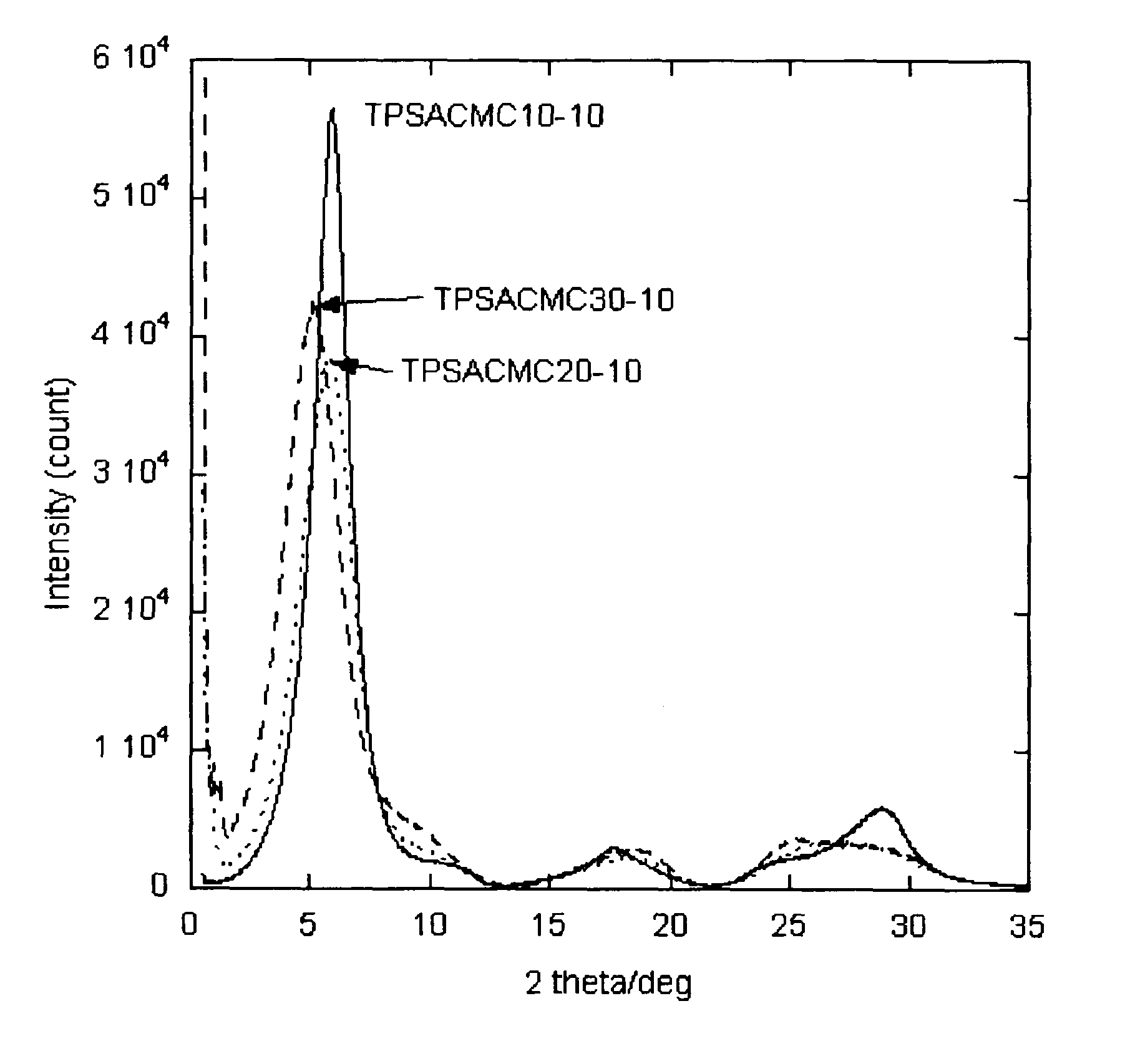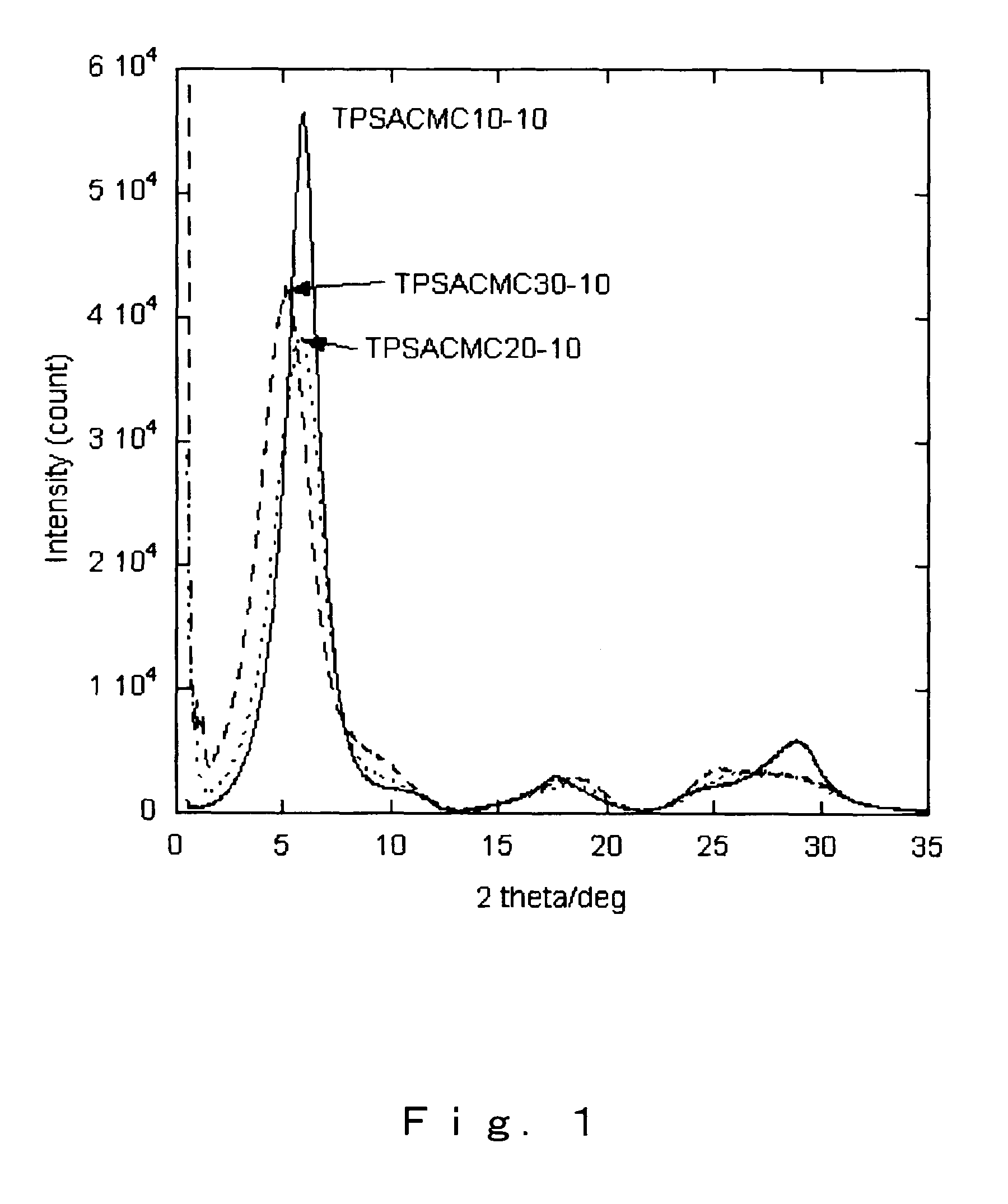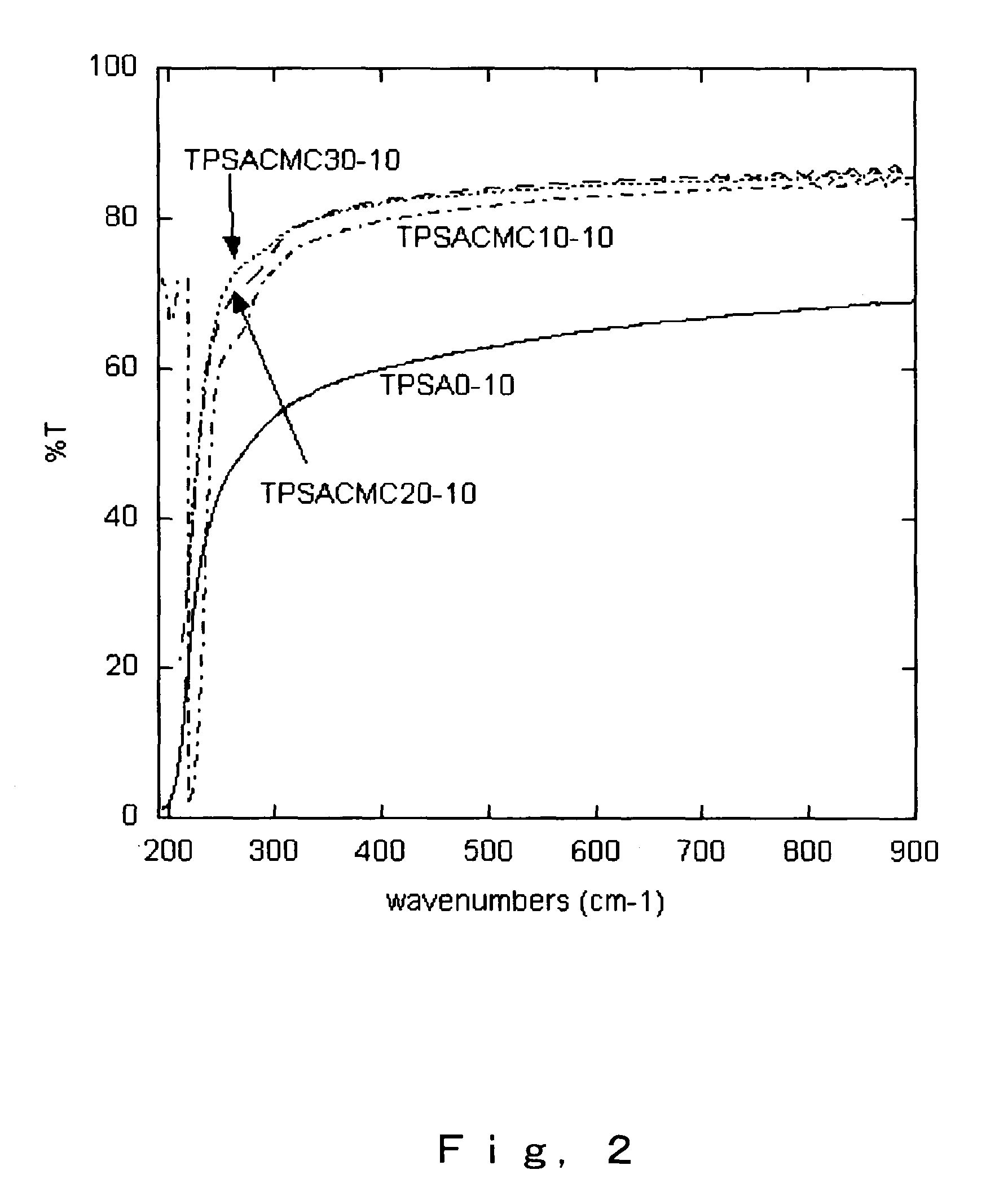Transparent film
a technology of transparent film and film film, applied in the field of transparent materials, can solve the problems of insufficient heat resistance and gas barrier properties, insufficient pliable transmittance and heat resistance, and difficulty in achieving lighter weights, and achieves excellent flexibility and processability, light weight and light fastness. high
- Summary
- Abstract
- Description
- Claims
- Application Information
AI Technical Summary
Benefits of technology
Problems solved by technology
Method used
Image
Examples
example 1
(1) Manufacture of an Inorganic Layered Compound Thin Film
[0048]Synthetic saponite “Smecton” (Kunimine Industries, Inc.), as a clay, was added in an amount of 0.9 g to 100 cm3 of distilled water, then the whole was placed, together with a Teflon™ rotor, in a plastic sealed container, followed by vigorous shaking for 2 hours at 25° C. to yield a homogeneous dispersion. To this dispersion there was added, as an additive, 0.1 g of commercially available sodium carboxymethylcellulose, followed by vigorous shaking, to yield a homogeneous dispersion comprising the synthetic saponite and the sodium carboxymethylcellulose. Next, this clay paste was deaerated in a vacuum defoaming apparatus. The clay paste was then applied onto a polypropylene tray having a flat surface. A ground spatula made of stainless steel was used to apply the clay paste. Using a spacer as a guide there was molded a clay paste film having a homogeneous thickness. The tray was placed in a forced draft oven and was dried...
example 2
(1) Manufacture of an Inorganic Layered Compound Thin Film
[0052]Synthetic saponite “Smecton” (Kunimine Industries, Inc.), as a clay, was added in an amount of 0.8 g to 100 cm3 of distilled water, then the whole was placed, together with a Teflon™ rotor, in a plastic sealed container, followed by vigorous shaking for 2 hours at 25° C. to yield a homogeneous dispersion. To this dispersion there was added, as an additive, 0.2 g of commercially available sodium carboxymethylcellulose, followed by vigorous shaking, to yield a homogeneous dispersion comprising the synthetic saponite and the sodium carboxymethylcellulose. Next, this clay paste was deaerated in a vacuum defoaming apparatus. The clay paste was then applied onto a polypropylene tray having a flat surface. A ground spatula made of stainless steel was used to apply the clay paste. Using a spacer as a guide there was molded a clay paste film having a homogeneous thickness. The tray was placed in a forced draft oven and was dried...
example 3
(1) Manufacture of an Inorganic Layered Compound Thin Film
[0055]Synthetic saponite “Smecton” (Kunimine Industries, Inc.), as a clay, was added in an amount of 0.7 g to 100 cm3 of distilled water, then the whole was placed, together with a Teflon™ rotor, in a plastic sealed container, followed by vigorous shaking for 2 hours at 25° C. to yield a homogeneous dispersion. To this dispersion there was added, as an additive, 0.3 g of commercially available sodium carboxymethylcellulose, followed by vigorous shaking, to yield a homogeneous dispersion comprising the synthetic saponite and the sodium carboxymethylcellulose. Next, this clay paste was deaerated in a vacuum defoaming apparatus. The clay paste was then applied onto a polypropylene tray having a flat surface. A ground spatula made of stainless steel was used to apply the clay paste. Using a spacer as a guide there was molded a clay paste film having a homogeneous thickness. The tray was placed in a forced draft oven and was dried...
PUM
| Property | Measurement | Unit |
|---|---|---|
| surface roughness | aaaaa | aaaaa |
| thickness | aaaaa | aaaaa |
| transparent | aaaaa | aaaaa |
Abstract
Description
Claims
Application Information
 Login to View More
Login to View More - R&D
- Intellectual Property
- Life Sciences
- Materials
- Tech Scout
- Unparalleled Data Quality
- Higher Quality Content
- 60% Fewer Hallucinations
Browse by: Latest US Patents, China's latest patents, Technical Efficacy Thesaurus, Application Domain, Technology Topic, Popular Technical Reports.
© 2025 PatSnap. All rights reserved.Legal|Privacy policy|Modern Slavery Act Transparency Statement|Sitemap|About US| Contact US: help@patsnap.com



